Stone in Armenia
( 44 )
Nature Stone:
Show More
Country:
-
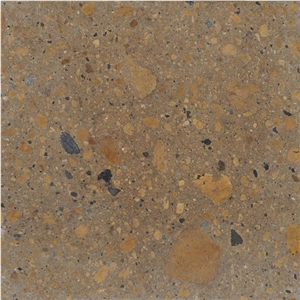 Additional Names:Yerevan Tufa Stone,Armenia Tuff Stone,Dscherwesch Tuff Stone,Dscherwesch Brown Tufa Stone,Eriwan Tufa Stone,Erivan Volcanic Tuff Stone,Dscherwesch Ret Tuff Stone,Dsherwesh Brown Tuff Stone,Yerevan Tuff Stone,Yerevan TuffYerevan Tufa Stone,Armenia Tuff Stone,Dscherwesch Tuff Stone,Dscherwesch Brown Tufa Stone,Eriwan Tufa Stone,Erivan Volcanic Tuff Stone,Dscherwesch Ret Tuff Stone,Dsherwesh Brown Tuff Stone,Yerevan Tuff Stone,Yerevan TuffPost Request
Additional Names:Yerevan Tufa Stone,Armenia Tuff Stone,Dscherwesch Tuff Stone,Dscherwesch Brown Tufa Stone,Eriwan Tufa Stone,Erivan Volcanic Tuff Stone,Dscherwesch Ret Tuff Stone,Dsherwesh Brown Tuff Stone,Yerevan Tuff Stone,Yerevan TuffYerevan Tufa Stone,Armenia Tuff Stone,Dscherwesch Tuff Stone,Dscherwesch Brown Tufa Stone,Eriwan Tufa Stone,Erivan Volcanic Tuff Stone,Dscherwesch Ret Tuff Stone,Dsherwesh Brown Tuff Stone,Yerevan Tuff Stone,Yerevan TuffPost Request Armenia
-Tuff
Armenia
-Tuff -
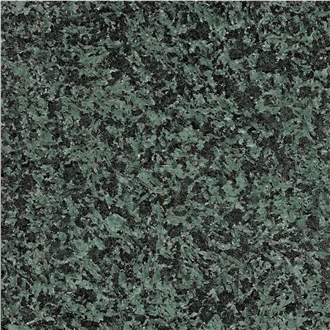 Additional Names:Pambak Green Granite,Verde Pambak Granite,Green Pambak Granite,Ararat Green GranitePambak Green Granite,Verde Pambak Granite,Green Pambak Granite,Ararat Green GranitePost Request
Additional Names:Pambak Green Granite,Verde Pambak Granite,Green Pambak Granite,Ararat Green GranitePambak Green Granite,Verde Pambak Granite,Green Pambak Granite,Ararat Green GranitePost Request Armenia
-Granite
Armenia
-Granite -
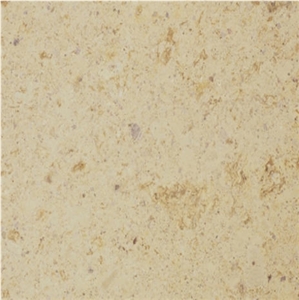 Additional Names:Beige Felsite Stone StoneBeige Felsite Stone StonePost Request
Additional Names:Beige Felsite Stone StoneBeige Felsite Stone StonePost Request Armenia
-Felsite
Armenia
-Felsite -
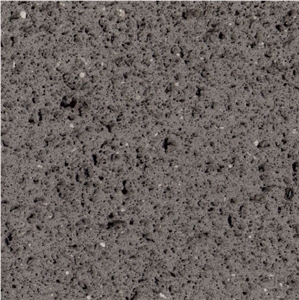 Additional Names:Borgia Vulkan-Tuff,Borgia Andesite,Borgia Basalt,Sewan BasaltBorgia Vulkan-Tuff,Borgia Andesite,Borgia Basalt,Sewan BasaltPost Request
Additional Names:Borgia Vulkan-Tuff,Borgia Andesite,Borgia Basalt,Sewan BasaltBorgia Vulkan-Tuff,Borgia Andesite,Borgia Basalt,Sewan BasaltPost Request Armenia
-Basalt
Armenia
-Basalt -
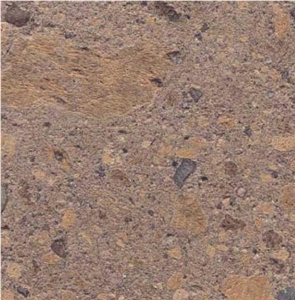 Additional Names:Armenian Felsit,Felsite Tuff StoneArmenian Felsit,Felsite Tuff StonePost Request
Additional Names:Armenian Felsit,Felsite Tuff StoneArmenian Felsit,Felsite Tuff StonePost Request Armenia
-Tuff
Armenia
-Tuff -
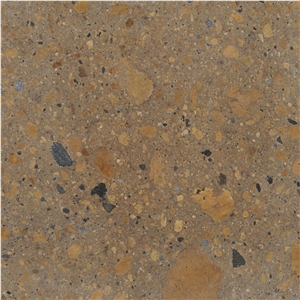 Additional Names:Artik Tufa Stone,Tuff Ani,Vedi TuffArtik Tufa Stone,Tuff Ani,Vedi TuffPost Request
Additional Names:Artik Tufa Stone,Tuff Ani,Vedi TuffArtik Tufa Stone,Tuff Ani,Vedi TuffPost Request Armenia
-Tuff
Armenia
-Tuff -
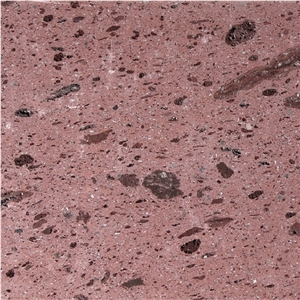 Additional Names:Artik Volcanic Tuff Stone,Ani Tuff Stone,Armenia Tuff Stone,Artik Tuff StoneArtik Volcanic Tuff Stone,Ani Tuff Stone,Armenia Tuff Stone,Artik Tuff StonePost Request
Additional Names:Artik Volcanic Tuff Stone,Ani Tuff Stone,Armenia Tuff Stone,Artik Tuff StoneArtik Volcanic Tuff Stone,Ani Tuff Stone,Armenia Tuff Stone,Artik Tuff StonePost Request Armenia
-Tuff
Armenia
-Tuff -
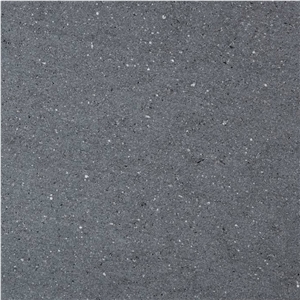 Additional Names:Sisian Basalt,Armenia Grey Basalt,Sysian Basalt,Sisiyan BasaltSisian Basalt,Armenia Grey Basalt,Sysian Basalt,Sisiyan BasaltPost Request
Additional Names:Sisian Basalt,Armenia Grey Basalt,Sysian Basalt,Sisiyan BasaltSisian Basalt,Armenia Grey Basalt,Sysian Basalt,Sisiyan BasaltPost Request Armenia
-Basalt
Armenia
-Basalt -
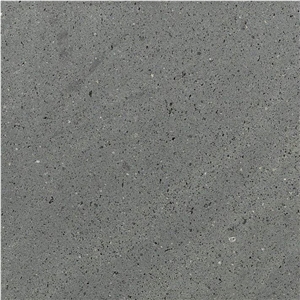 Additional Names:Armenia Gray Basalt,Armenia Grey Lava Stone,Grey Basalt Armenia,Armenia Grey Lavastone,Armenia BasaltArmenia Gray Basalt,Armenia Grey Lava Stone,Grey Basalt Armenia,Armenia Grey Lavastone,Armenia BasaltPost Request
Additional Names:Armenia Gray Basalt,Armenia Grey Lava Stone,Grey Basalt Armenia,Armenia Grey Lavastone,Armenia BasaltArmenia Gray Basalt,Armenia Grey Lava Stone,Grey Basalt Armenia,Armenia Grey Lavastone,Armenia BasaltPost Request Armenia
-Basalt
Armenia
-Basalt -
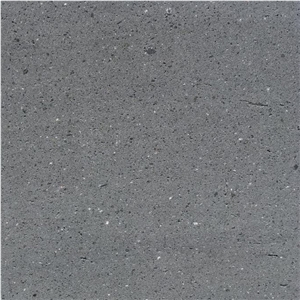 Additional Names:Basalt Aramus,Basalt Yerevan,Armenia Grey BasaltBasalt Aramus,Basalt Yerevan,Armenia Grey BasaltPost Request
Additional Names:Basalt Aramus,Basalt Yerevan,Armenia Grey BasaltBasalt Aramus,Basalt Yerevan,Armenia Grey BasaltPost Request Armenia
-Basalt
Armenia
-Basalt -
 Additional Names:Felsite Cream Stone,Felsite Stone,Felsite Gold,Armenian Gold Stone Stone,In China Stone Market:亚美尼亚金(Yàměiníyǎ Jīn)Felsite Cream Stone,Felsite Stone,Felsite Gold,Armenian Gold Stone Stone,In China Stone Market:亚美尼亚金(Yàměiníyǎ Jīn)Post Request
Additional Names:Felsite Cream Stone,Felsite Stone,Felsite Gold,Armenian Gold Stone Stone,In China Stone Market:亚美尼亚金(Yàměiníyǎ Jīn)Felsite Cream Stone,Felsite Stone,Felsite Gold,Armenian Gold Stone Stone,In China Stone Market:亚美尼亚金(Yàměiníyǎ Jīn)Post Request Armenia - Felsite
Armenia - Felsite
-
 Additional Names:Aramus Basalt,Armenia Gray BasaltAramus Basalt,Armenia Gray BasaltPost Request
Additional Names:Aramus Basalt,Armenia Gray BasaltAramus Basalt,Armenia Gray BasaltPost Request Armenia - Basalt
Armenia - Basalt
-
 Additional Names:Ararat Travertine,Ararat Beige TravertineArarat Travertine,Ararat Beige TravertinePost Request
Additional Names:Ararat Travertine,Ararat Beige TravertineArarat Travertine,Ararat Beige TravertinePost Request Armenia - Travertine
Armenia - Travertine
-
 Additional Names:Armenia Black Lava StoneArmenia Black Lava StonePost Request
Additional Names:Armenia Black Lava StoneArmenia Black Lava StonePost Request Armenia - Basalt
Armenia - Basalt
-
 Additional Names:Dscherwesch Tuff,Eriwan Tufa,Erivan Volcanic Tuff,Dscherwesch Brown Tuff Stone,Dsherwesh Brown Tufa Stone,Armenia Red Tuff StoneDscherwesch Tuff,Eriwan Tufa,Erivan Volcanic Tuff,Dscherwesch Brown Tuff Stone,Dsherwesh Brown Tufa Stone,Armenia Red Tuff StonePost Request
Additional Names:Dscherwesch Tuff,Eriwan Tufa,Erivan Volcanic Tuff,Dscherwesch Brown Tuff Stone,Dsherwesh Brown Tufa Stone,Armenia Red Tuff StoneDscherwesch Tuff,Eriwan Tufa,Erivan Volcanic Tuff,Dscherwesch Brown Tuff Stone,Dsherwesh Brown Tufa Stone,Armenia Red Tuff StonePost Request Armenia - Tuff
Armenia - Tuff
-
 Additional Names:Beige Travertine Armenia,Armenia Classic Beige TravertineBeige Travertine Armenia,Armenia Classic Beige TravertinePost Request
Additional Names:Beige Travertine Armenia,Armenia Classic Beige TravertineBeige Travertine Armenia,Armenia Classic Beige TravertinePost Request Armenia - Travertine
Armenia - Travertine
-
 Additional Names:Felsite Cream,Felsite Stone,Felsite Gold,Armenian Gold Felsite,Armenian Gold Felsite StoneFelsite Cream,Felsite Stone,Felsite Gold,Armenian Gold Felsite,Armenian Gold Felsite StonePost Request
Additional Names:Felsite Cream,Felsite Stone,Felsite Gold,Armenian Gold Felsite,Armenian Gold Felsite StoneFelsite Cream,Felsite Stone,Felsite Gold,Armenian Gold Felsite,Armenian Gold Felsite StonePost Request Armenia - Felsite
Armenia - Felsite
-
 Additional Names:Parvana Basalt,Parvana Lava StoneParvana Basalt,Parvana Lava StonePost Request
Additional Names:Parvana Basalt,Parvana Lava StoneParvana Basalt,Parvana Lava StonePost Request Armenia - Basalt
Armenia - Basalt
-
 Additional Names:Noce Travertine Armenia,Armenia Brown Travertine,Travertino Noce,Armenia Noce TravertineNoce Travertine Armenia,Armenia Brown Travertine,Travertino Noce,Armenia Noce TravertinePost Request
Additional Names:Noce Travertine Armenia,Armenia Brown Travertine,Travertino Noce,Armenia Noce TravertineNoce Travertine Armenia,Armenia Brown Travertine,Travertino Noce,Armenia Noce TravertinePost Request Armenia - Travertine
Armenia - Travertine
-

-
 Additional Names:Artik Lava Stone,Artik Gneiss BasaltArtik Lava Stone,Artik Gneiss BasaltPost Request
Additional Names:Artik Lava Stone,Artik Gneiss BasaltArtik Lava Stone,Artik Gneiss BasaltPost Request Armenia - Andesite
Armenia - Andesite
-
 Additional Names:Armenia Black Tuff L StoneArmenia Black Tuff L StonePost Request
Additional Names:Armenia Black Tuff L StoneArmenia Black Tuff L StonePost Request Armenia - Tuff
Armenia - Tuff
-
 Additional Names:Armenia Golden Travertine,Armenia Yellow TravertineArmenia Golden Travertine,Armenia Yellow TravertinePost Request
Additional Names:Armenia Golden Travertine,Armenia Yellow TravertineArmenia Golden Travertine,Armenia Yellow TravertinePost Request Armenia - Travertine
Armenia - Travertine
-
 Additional Names:Byurakan Tufa,Byurakan Tuff StoneByurakan Tufa,Byurakan Tuff StonePost Request
Additional Names:Byurakan Tufa,Byurakan Tuff StoneByurakan Tufa,Byurakan Tuff StonePost Request Armenia - Tuff
Armenia - Tuff
-
Are there color variations of Namibia's Diabas Omenje Granite?Yes, there are color variations of Namibias Diabas Omenje Granite. The granite typically comes in shades of dark green or black, but there may be variations in the intensity of color, presence of patterns or veins, and overall appearance. Some stones may have lighter or darker patches, flecks of other colors, or different textures, which adds to the beauty and uniqueness of each piece.Read More
-
Is India's Verde Venato Granite an expensive stone?I dont have access to current pricing data. However, the cost of Verde Venato Granite can vary based on factors such as the quality, availability, and demand. It is always advisable to check the current market rates and consult with a professional before making a purchase.Read More
-
Can Brazil's Cocada Green Quartzite be used in a bathroom?Yes, Brazils Cocada Green Quartzite can be used in a bathroom. It is a durable and moisture-resistant material that can withstand the humid environment of a bathroom. However, it is important to seal the stone properly to prevent any staining or damage from water and other bathroom products.Read More
-
Can Hungary's Mediterranean Gold Limestone be used in landscaping?Yes, Hungarys Mediterranean Gold Limestone can be used in landscaping. It is a type of limestone with a beautiful golden color and unique patterns, making it an attractive choice for various landscaping projects. It can be used for pathways, patios, garden walls, stone structures, and other outdoor features. The durability and natural aesthetic of the limestone make it a versatile option for landscaping design.Read More
-
What grade is Brazil's Amarelo Real Granite?I cannot access current information. However, typically granite is not graded by a number or letter system like some other materials. The value and quality of granite are determined by factors such as color, pattern, and overall appearance. Brazilian Amarelo Real Granite is considered a higher-end stone due to its unique golden and yellowish tones.Read More
-
How can I make Golden Rose Cream Marble floors not slippery?There are several steps you can take to reduce the slipperiness of Golden Rose Cream Marble floors: 1. Clean the floor regularly: Regular cleaning helps remove any dirt or dust that may make the floor more slippery. Use a pH-neutral cleaner specifically formulated for marble surfaces and follow the manufacturers instructions. 2. Use non-slip rugs or mats: Place non-slip rugs or mats in high-traffic areas, such as entryways or bathrooms, to provide an extra layer of traction and absorb any moisture from shoes or spills. 3. Apply a marble floor sealer: Use a specifically designed marble floor sealer to create an invisible protective barrier on the surface, which can reduce the slipperiness of the marble. Follow the manufacturers instructions for application and reapplication. 4. Implement non-slip treatments: Non-slip treatments like anti-slip coatings or polishes can be applied to the marble floor. These products are designed to increase the traction of the floor surface and reduce the risk of slipping. Ensure that you use products specifically formulated for marble. 5. Keep the floor dry: Wipe up any spills or moisture immediately to prevent the marble floor from becoming slippery. Place absorbent mats near sinks or bathtubs to absorb excess water. 6. Use appropriate footwear: Avoid walking on the marble floor with wet or slippery shoes. Opt for clean, dry footwear or slip-resistant shoes to minimize the risk of slipping. Remember, marble is naturally more slippery than other flooring materials, so it is essential to take precautions to reduce slipperiness and prevent accidents.Read More
-
Are there color variations of Finland's Amadeus Granite?Yes, there can be variations in the color of Finlands Amadeus Granite. The base color of Amadeus Granite is typically a light grey or white, but it can also have varying shades of pink, brown, or black minerals scattered throughout the stone. These natural variations in color are due to the different mineral compositions and geological formations that occur during the granites formation process. Each slab of Amadeus Granite can have its own unique combination of colors and patterns, making it a sought-after choice for countertop and flooring applications.Read More
-
Is Celeste Argentina Marble an expensive stone?I do not have access to current market prices for specific stones. However, marble is generally considered a luxury building material and tends to be more expensive than other types of natural stone. The price of Celeste Argentina Marble would depend on factors such as availability, quality, and market demand.Read More
-
Is Brazil's Angel White Granite an expensive stone?I dont have access to real-time market prices of the Angel White Granite in Brazil. However, granite is generally considered one of the more affordable natural stone countertop options. The cost can vary depending on various factors such as the quality, color, and availability of the stone. It is best to consult with a professional granite supplier for accurate pricing information.Read More
-
Is Iran's Andezit Grey Andesite an expensive stone?I dont have access to the current market price of stones. However, the price of Andesite Grey stone can vary depending on various factors such as quality, quantity, location, and supplier. Its recommended to seek advice from a professional in the stone industry or a supplier for current prices and information.Read More
-
Can India's Lotus Green Granite be used in landscaping?Yes, Indias Lotus Green Granite can be used in landscaping. It is a durable and versatile natural stone that is commonly used for various landscaping applications such as paving, walkways, retaining walls, garden edging, and decorative features. Its attractive green color with specks of grey and black adds an aesthetic appeal to outdoor spaces. Additionally, its resistance to weathering and low maintenance requirements make it a popular choice for landscaping projects.Read More
-
Can Turkey's Zebrina Marble be used exterior applications in very dusty climates?Turkeys Zebrina Marble can be used for exterior applications in dusty climates, but it may require some additional care and maintenance. Marble is a natural stone that can be affected by weathering, environmental factors, and dust accumulation. In dusty climates, the marble may require regular cleaning to prevent dust buildup and maintain its appearance. Regular cleaning with a mild detergent and water, along with periodic pressure washing, can help remove dust and keep the surface clean. It is also important to seal the marble properly to protect it from dust, stains, and other potential damage. A good quality impregnating sealer specifically designed for marble is recommended. The sealer should be applied periodically, as instructed by the manufacturer, to maintain its protective properties. In extremely dusty climates, it may be necessary to clean the marble more frequently and take additional measures such as installing covers or implementing preventive measures to reduce dust accumulation on the surface. Overall, while Turkeys Zebrina Marble can be used for exterior applications in dusty climates, it is important to maintain regular cleaning and sealing routines to ensure its durability and aesthetic appeal.Read More
-
Is China's Brown Grain Granite an expensive stone?I dont have d pricing information for various granite types, but Brown Grain Granite is a natural stone, so its price varies depending on factors such as type, quality, availability, and supplier. However, in general, granite is considered one of the more expensive natural stones due to its durability, uniqueness, and appeal.Read More
-
Can Italy's Bianco Maremma Travertine be used outdoors?Yes, Italys Bianco Maremma Travertine can be used outdoors. Travertine is a highly durable and weather-resistant natural stone, making it an excellent choice for outdoor applications such as patios, pool decks, and walkways. However, it is important to note that travertine is a porous material, and sealing it is recommended to protect it from stains and the effects of weathering.Read More
-
Can Portugal's Marron Monchique Granite be used in a bathroom?Yes, Portugals Marron Monchique Granite can be used in a bathroom. Granite is a durable and water-resistant material that makes it suitable for use in wet areas like bathrooms. It can be used for countertops, backsplashes, vanity tops, and even as tiles for flooring or wall cladding. With proper sealing and maintenance, Marron Monchique Granite can add a luxurious and sophisticated touch to your bathroom.Read More
-
How thick is China's Visa Gold Granite slabs?The thickness of Chinas Visa Gold Granite slabs can vary depending on customer preferences and requirements. Generally, granite slabs have thicknesses ranging from 2 centimeters (0.75 inches) to 3 centimeters (1.25 inches). However, it is recommended to consult with the supplier or manufacturer to determine the exact thickness options available for Chinas Visa Gold Granite slabs.Read More
-
Can India's P White Granite be used exterior applications in hot climates?Yes, Indias P White Granite can be used for exterior applications in hot climates. Granite is a durable and heat-resistant natural stone that is suitable for outdoor use. It can withstand high temperatures and is not affected by extreme weather conditions such as UV rays, direct sunlight, or heat. Additionally, granite is resistant to staining, scratching, and fading, making it an ideal choice for outdoor surfaces in hot climates.Read More
-
Can Iran's Lightning Marble be used in a bathroom?I do not have the expertise to determine the specific guidelines for using materials in a bathroom. However, based on the information available online, it appears that certain types of stone, including Lightning Marble, can be used in bathroom areas. However, it is important to consider factors such as water absorption, slip-resistance, and maintenance requirements before using any natural stone in a wet environment. Consult with a professional before making a final decision.Read More
-
How thick is China's Pearl Flower Granite slabs?The thickness of Chinas Pearl Flower Granite slabs can typically vary between 2 centimeters (0.79 inches) and 3 centimeters (1.18 inches). However, its important to note that the thickness can be customized based on individual preferences and requirements.Read More
-
Are there color variations of Greece's Rosa Egeo Marble?Yes, there are color variations of Greeces Rosa Egeo Marble. It can range from light pink to dark pink with occasional white veining. Some slabs may have more pronounced veining or be more uniform in color. The exact color variation can depend on the specific quarry and location where the marble is sourced.Read More





